|
It has been quite some time since my last blog, so I wanted to share with you some of my latest work and the research that has contributed to it. My previous body of work used narrative of the dog and human relationship to communicate the internal sense of belonging and comfort formed through companionship. I have begun a new series of work in which I am exploring form and volume, as well as emphasizing surface with low relief patterns and texture. By researching decorative ceramics throughout history and examining the patterns chosen I am learning ways that layers of pattern call attention to the form, provide direction, and possess a visual softness and physical depth. I began reading the Language of Ornament and it has helped me to understand the history of decorative art and objects as well as how to talk about my own work and need to fill a surface with pattern. Ornamentation is defined as "the elaboration of functionally complete objects for the sake of visual pleasure" and talks about how ironic it is that our embrace of form without the guidance of content overlapped with our rejection of ornament. But it is ornamentation that most teaches us the appreciation of form! This statement encouraged me to really focus on my forms and investigate how the patterns I paint on them can contribute and emphasize the shape, volume, and breath of each piece I make. This book has also encouraged me to recognize how I reconnected with my love of making objects that reference use and function. I have always found joy in making objects, even as a child. I also discovered a love of taking time for them and hand painting every single detail. From a maker's standpoint, this book talks about how ornamentation means a new approach to materials and techniques, a profound level of control, and how as the artist we gain a new understanding of the relation between functional and decorative form. Through this work I've given myself the challenge to do just that. I chose to make this work as an exploration outside of the canine character in an effort to express ideas of comfort and joy through form, pattern, and surface. How does this work provide a joyful and individual experience for the viewer or user? And how do the patterns I paint, the materials I use, and the techniques in which I apply them interact in a way that emphasizes its form, its breath, and its presence?
Since moving to Arrowmont as an Artist in Residence I have been provided the opportunity to share my work each week with students and artists that come for workshops! It has been a great experience to talk about my work, techniques, and experiences with others in such great depth. Some time has passed since my last blog, so I though I would share with you a bit of what I present to those that attend our artist talks! I hope that you enjoy this glimpse into my work and the thought behind it... Sense of Place Porcelain, Gold Luster 13” x 14” 2018 Looking at my work you wouldn’t know that I spent years in the wood firing community. Honestly, I always felt a disconnect between my woodfired pots and my love for drawing and painting, and struggled identifying myself with my work. I discovered that what I really loved about woodfiring wasn’t necessarily my work, but instead was the community and sense of belonging that I found within it. In graduate school I took an art history course that inspired me to incorporate the dog with my figures. I portray moments of closeness and comfort and depict the dog sometimes mirroring the gesture of the person. I was particularly interested in the way the emptiness of color encouraged the viewer to focus on the moment depicted and also how it conveyed this companionship as an idea or a symbol. Lucian Freud Double Portrait 1985-86 The use of dogs as surrogate human beings and as metaphor shares a profound history within psychology and the arts. Aside from what dogs provide us psychologically and emotionally in our current lives; within many canonic masterpieces they are essential to the meaning of the human cast of characters or narrative. They provide symbolism for loyalty, fidelity, and compassion or in many works the dog is used as a stand in for humans. Rest In Blues Porcelain, Gold Luster 15.5” x 18” 2018 This body of work references our relationship with the dog and uses its presence in art history as a way to talk about belonging and comfort. I use the dog in my work not to convey a specific animal, but to convey a feeling and to talk about all relationships and our innate desire to belong. I find a lot of inspiration in the history of ceramics moving beyond conventional function and form, creating union between shape, decoration, and story is fascinating. Like this, my work varies in shape and incorporates low relief volume and gold luster details within the nostalgic patterns. While at Arrowmont, one of my main goals is to create a larger variety of forms and explore pattern. I plan to investigate techniques and materials that provide a physical and visual softness through surface, layers, and more volume. You can see more of my work and my time at Arrowmont by following me on Instagram @stephanie.m.wilhelm and subscribing to my mailing list in the contact page of my site!
Primarily, within my fresco work I have felt the forms and imagery to be unresolved and decided my main priority would be to develop my forms further and emphasize within them a sense of space, depth, and dimension. Early cubist painter Georges Braque once spoke about his work and that of Picasso as their "quest to portray space." I have been thinking about this use of space. During my midterm critique my peers pointed out similarities between my interests, my work, and the way that I approached these 3 dimensional forms. Cubism would portray their subject from a multitude of viewpoints in order to represent their subject in a greater context. It focuses on the "object of a painting" vs just a realistic representation of life. Thus the aim of painting is not to pretend that the viewer is looking through a window, but to make the viewer aware of the picture surface itself as well as the subject matter it depicts. I came in to graduate school primarily as a vessel maker and I have spent my time here exploring many means of making. While I have enjoyed hand building forms, I have as well missed working on my potters wheel. A week before my midterm critique I decided that I wanted to push myself further and strengthen form while incorporating the use of my wheel. I enjoy diving deep into my work, altering objects so that they have taken on a new form and new meaning than that of their primary cylindrical shape. In a sense, I am seeing within these basic shapes in the way that I see within my blank canvases. I have also been taking a screen printing class and working independently creating clay mono prints. I have enjoyed this way of working....building up layers and pulling prints. There are elements of surprise, collaboration, and depth that are discovered in my prints and that have always been qualities that I am attracted to. I found there to be a direct relationship between the way in which I build layers of color for my buon fresco and the way in which I build layers for the mono prints. Now that my peers have pointed out cubism, I can also see ways in which I can build forms that make my viewer aware of the image surface and dimension itself vs just the subject matter. I would like to approach my work in the way cubism does....using multiple points of view to emphasize the deeper context of my subject but as well to trick the mind and push this sense of time and space. I also wanted my wall pieces to have these 3 dimensional qualities. To collaborate with their surface and with their imagery. Within the technique of drop molds I have found ways in which to create these forms and avoid the intense cracking and weight I had issues with in my earlier pieces.
I have also been experimenting with buon fresco to discover ways I can better apply the fresco to a dimensional form, and recently attempted to work with more of a lime wash application technique. While the surface is not as smooth and does not have as many layers as the primary technique of application, I enjoyed the painterly depth that this created and plan to explore this further. While painting I wanted to continue practicing my mark making and create a variety of work between color and mark making for us to have conversation. After doing this and now reading about cubism, I am interested in the way in which Picasso and Braque restricted their pallet to earth tones and muted grays in order to lessen the clarity between the fragmented shapes of figures and objects. I appreciated in my paintings and forms the way in which the viewer must move around the piece in order to see the dimensionality that occurs in the object itself...something less noticeable due to the ways in which I painted it. |
|
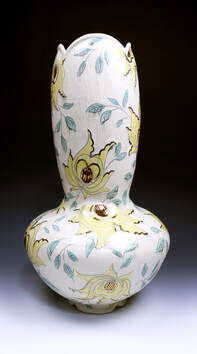


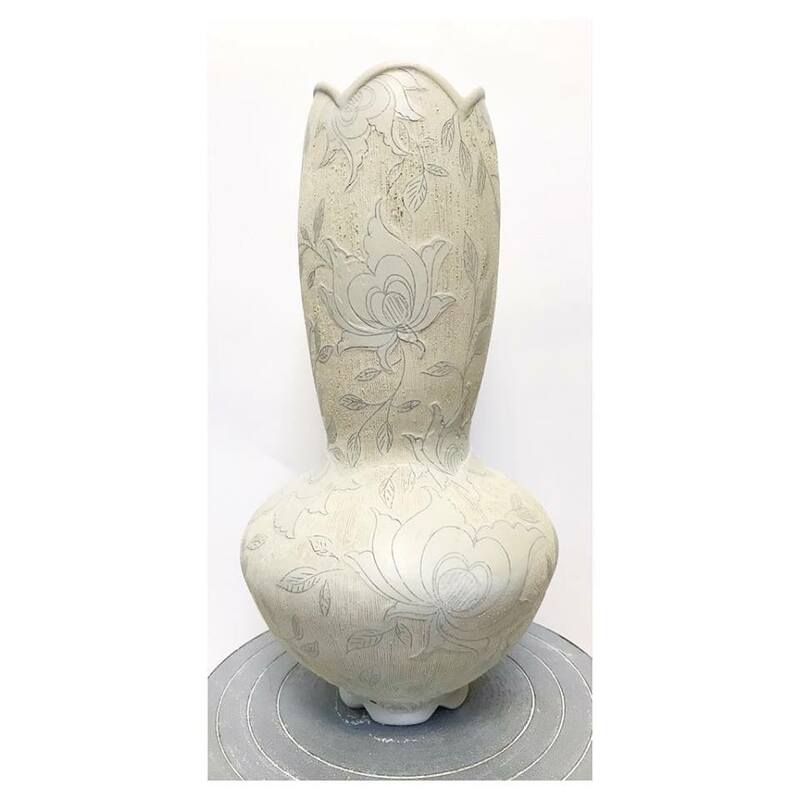

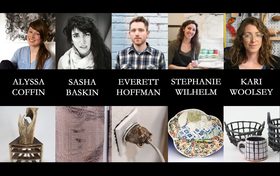


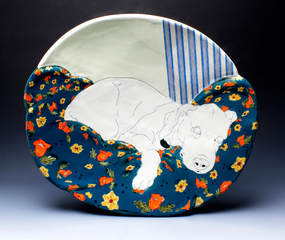
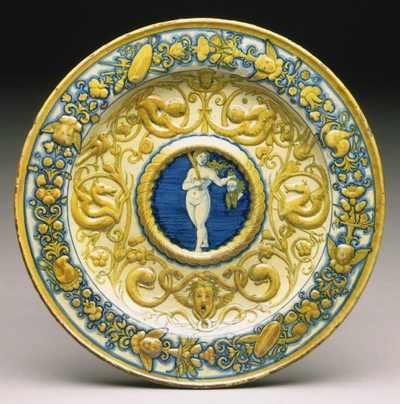
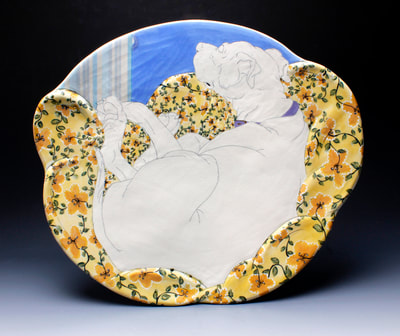
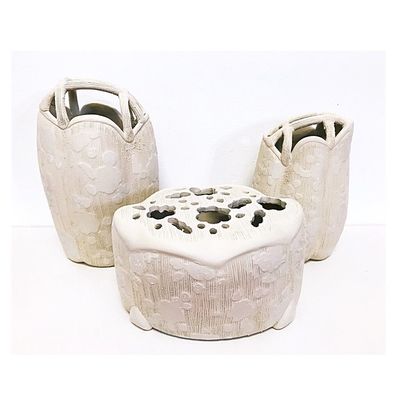
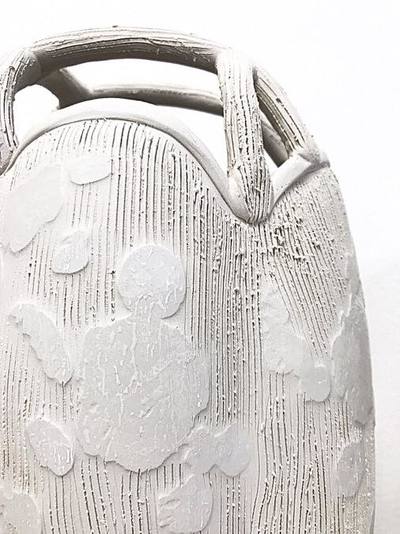
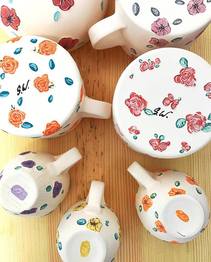
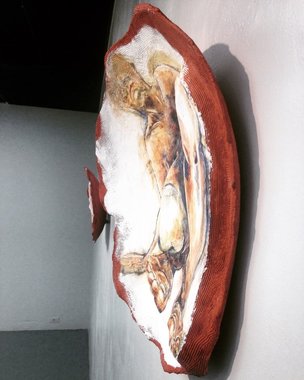

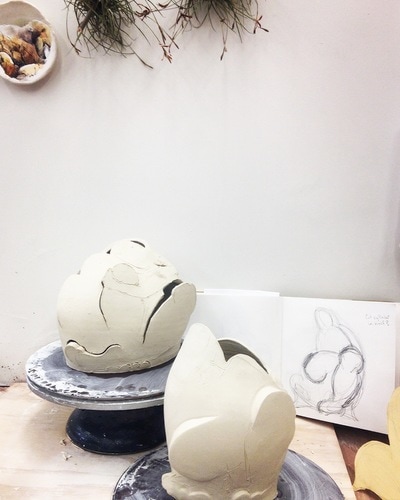
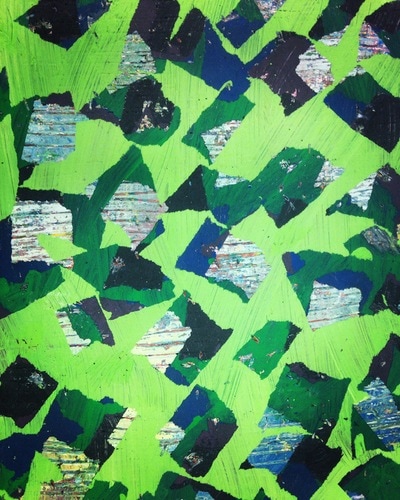

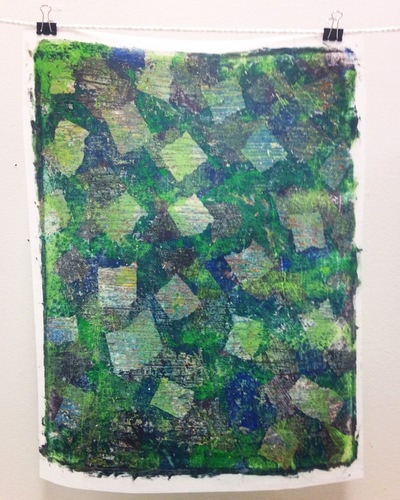

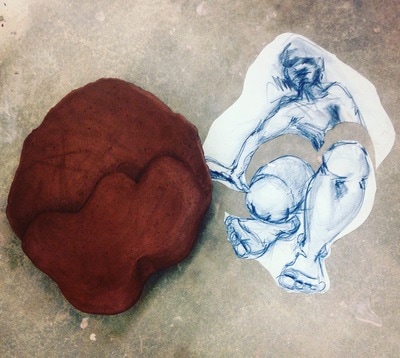

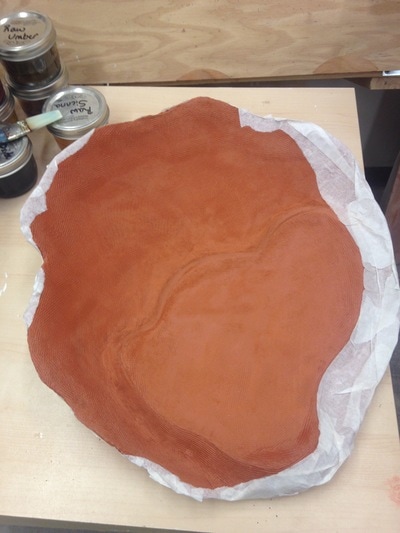
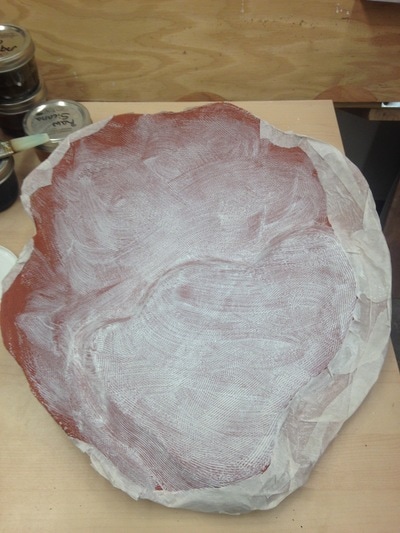

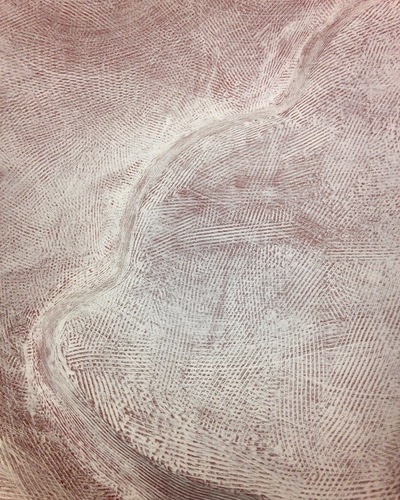

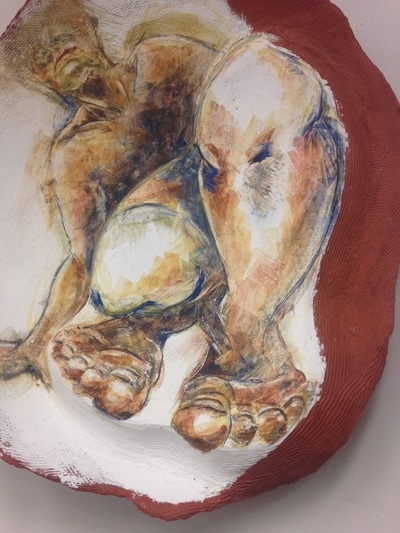
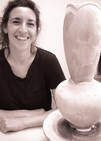
 RSS Feed
RSS Feed